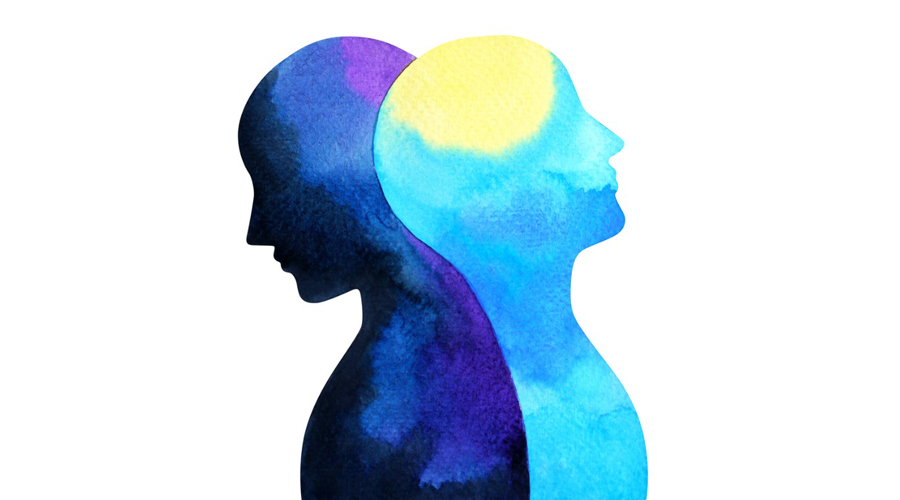How do we help clients grappling with traumatic grief?
By Dr. Kate Truitt
The grief process is an internal, emotional response to the loss of something or someone important to us. Trauma, on the other hand, involves an external event that is deeply distressing or disturbing. When these two phenomena happen at the same time, and they often do, they can merge into what is known as ‘traumatic grief’, a complex experience that combines the symptoms of grief with those of trauma, often leading to a difficult, prolonged, or complicated healing process.
Supporting Clients Through Traumatic Grief
Being there for clients going through traumatic grief requires a nuanced approach that honors the complexity and emotional burdens of their experience.
In this video about traumatic grief, you can learn more about what makes traumatic grief especially unique.
These are some of the ways you can offer support:
1. Create a safe and supportive environment
Provide a safe space where your clients feel comfortable expressing their emotions without fear of judgment. Actively listen without interrupting or offering unsolicited advice. Use a calm and gentle tone. Avoid minimizing their loss or using cliches like “everything happens for a reason.” You may also offer a comfortable chair, tissues, or a glass of water.
2. Validate their feelings
Acknowledge their pain with phrases like, “This must be incredibly difficult for you” of “It’s okay to feel overwhelmed.” Let them know it’s normal to experience a wide range of emotions like anger, sadness, guilt, or fear. Most importantly, avoid comparisons. Everyone grieves differently. Don’t compare their experience to others.
3. Understand that grief and trauma may be deeply connected with each other
Remember that traumatic grief can disrupt emotions and make it harder to process the loss. Look for signs of trauma symptoms such as flashbacks, nightmares, hypervigilance, or avoidance behaviors.
It’s also important to learn about the impact of traumatic events on the grieving process. Our upcoming workshops will explore the fascinating and essential connection between traumatic events and the grieving process. This knowledge can be transformative for anyone supporting those in grief. Subscribe to our newsletter for early access!
I invite you to watch this snippet from one of our recent trainings about Traumatic Grief delving deep into embracing the multidimensional journey of grief.
4. Encourage expression of grief in different forms
Create an open space for them to talk about their loved one, the loss, and their feelings. Suggest journaling, writing poetry, drawing, or creating music to help them express their emotions. Help them find healthy ways to honor their loved one’s memory, such as planting a tree, creating a memory box, or holding a memorial service.
In this psychoeducational video about managing overwhelming emotions, I delve into the unique experience of grieving after traumatic loss. Discover how emotions can resemble a tidal wave or detachment, both of which are normal reactions.
5. Explore therapeutic approaches
A therapist can help them process the trauma, manage difficult emotions, and develop coping mechanisms. Explore options like Cognitive Behavioral Therapy (CBT) or Eye Movement Desensitization and Reprocessing (EMDR).
Of course, one of my favorite healing modalities is the Havening Technique. In my book, Keep Breathing, I delve into how it helped me process my own grief and now, I’m honored to be one of the co-developers of this healing tool.
Havening Techniques aim to reduce activity in the amygdala, the part of the brain associated with fear and emotional response. This could potentially lessen the intensity of emotions linked to the traumatic loss. By focusing on self-soothing, this technique can help promote self-regulation and emotional calm. By rewiring neural pathways associated with traumatic grief, it can help reduce its emotional impact.
6. Help them build connections
Connect them with support groups for those who have experienced similar losses. Encourage them to stay connected with friends and family who offer understanding and support. Help them find local grief centers or bereavement programs.
7. Teach them coping strategies.
Teach them relaxation techniques like deep breathing, meditation, or mindfulness exercises. Help them find healthy distractions like hobbies, spending time in nature, or listening to music.
8. Foster resilience and post-traumatic growth
One of the best ways to help your clients going through traumatic grief is to help them identify their strengths and resources to cope with challenges. Encourage them to find meaning and purpose in life after their loss. Many people find positive personal growth after experiencing trauma, like increased empathy or a deeper appreciation for life.
By incorporating these strategies, you can create a supportive environment that helps your clients navigate the complexities of traumatic grief and move towards healing.
Understanding the Interplay Between Grief and Trauma
The grief process is an internal, emotional response to the loss of something or someone important to us. Trauma, on the other hand, involves an external event that is deeply distressing or disturbing. When these two phenomena happen at the same time, and they often do, they can merge into what is known as ‘traumatic grief’, a complex experience that combines the symptoms of grief with those of trauma, often leading to a difficult, prolonged, or complicated healing process.

Identifying Symptoms and Challenges
Recognizing the signs and challenges of traumatic grief in clients is crucial to providing proper support. Here’s how you can identify them:
Symptoms of Traumatic Grief
1. Emotional: Intense sadness, anger, guilt, fear, numbness, emotional dysregulation, difficulty accepting the loss.
2. Cognitive: Difficulty concentrating, flashbacks, nightmares, intrusive thoughts about the traumatic event, confusion, feeling disconnected from reality.
3. Physical: Changes in sleep patterns (sleeping too much or too little), changes in appetite, fatigue, headaches, body aches, hypervigilance (being constantly on edge).
4. Behavioral: Avoidance of reminders of the deceased or the traumatic event, social withdrawal, self-destructive behaviors (substance abuse, risky activities), difficulty completing daily tasks.
Challenges of Clients Going Through Traumatic Grief
1. Processing the trauma. They might seem like they’re just going through the motions of daily life without really feeling anything. It’s like they’re there, but not fully present.
2. Managing intense emotions. They might feel guilty, even if there was nothing they could have done to prevent the loss. They keep thinking about “what ifs” and “if onlys.”
3. Difficulty of expressing grief. They could be very sad, more than usual, and might cry often. Sometimes, they might not even know why they’re crying.
4. Social isolation. They might pull away from friends or family and want to be alone a lot. It’s like they lose interest in things they used to enjoy doing with others.
5. Difficulties with daily life. They could have sudden, scary thoughts or memories about the loss they experienced. These can pop up out of nowhere and make them feel like they’re reliving the bad experience.
6. Worrying about more bad things happening. They could start to worry a lot about other bad things happening to them or their loved ones, even when there’s no real reason to worry.
7. Trouble sleeping. They might find it hard to fall asleep or stay asleep. Or, they might sleep a lot more than usual but still feel tired.
It’s also important to look for pre-existing conditions. People with a history of mental health problems might be more vulnerable to complicated grief after a traumatic loss. Also, note that the suddenness, violence, or closeness of the relationship can all influence the severity of the grief and trauma response.
Not everyone will experience all these symptoms. The severity and duration of symptoms can vary greatly among individuals. If you suspect a client is struggling with traumatic grief, encourage them to seek professional help from a therapist experienced in trauma and grief therapy.
Building Resilience and Post-Traumatic Growth
Traumatic grief can be shattering, but it’s important to remember that people can emerge stronger after experiencing such adversity.
Here are some ways you can help your clients build resilience and foster post-traumatic growth:
1. Meaning-Making. Help them find meaning or purpose in the midst of their loss. This could involve exploring how they want to honor their loved one’s memory or identify personal growth opportunities arising from the experience.
2. Positive Reframing. Guide them to reframe their experience in a way that acknowledges the pain but also highlights their resilience and newfound strength.
3. Personal Growth. Explore how the experience may have led to positive changes in their lives, such as increased empathy, appreciation for life, or greater clarity about their values.
4. Focus on the Future. Help them set realistic goals for the future and develop a sense of hope and optimism.
These strategies can help you create a supportive environment that empowers your clients to navigate the challenges of traumatic grief and emerge stronger on the other side.
For Therapists: Self-Care and Managing Vicarious Trauma
As healers, support provider, and caregivers, mental health professionals can be at risk for vicarious trauma.
Here are some tips to help you take care of yourself and effectiveness as a mental health provider:
1. Establish clear boundaries between your work life and personal life. Don’t check work emails or take calls outside of work hours.
2. Be mindful of your own capacity and avoid taking on more cases than you can manage effectively.
3. Regular supervision with a qualified professional allows you to process challenging client cases and receive support.
4. Build a strong network of supportive colleagues, friends, and family members who can provide emotional support and understanding.
5. Make time for hobbies, interests, and activities that bring you joy and relaxation.
6. Prioritize regular exercise, healthy eating habits, and quality sleep.
7. Don’t hesitate to seek therapy for yourself, especially if you’re experiencing symptoms of vicarious trauma.
8. Integrate practices like meditation, yoga, or deep breathing exercises into your routine to manage stress and promote relaxation.
9. Learn to emotionally detach from your clients’ experiences while still maintaining empathy and compassion.
10. Focus on the positive aspects of your work and the difference you make in your clients’ lives.
11. Pace yourself when working with particularly traumatized clients to avoid emotional overload.
12. Be kind and understanding with yourself, acknowledging the challenges of your work.
As therapists, witnessing and supporting the journey through traumatic grief can be deeply affecting. Remember that taking care of yourself is not a luxury; it’s essential for preventing burnout and providing the best possible care for your clients.
In my book, “Keep Breathing: A Psychologist’s Intimate Journey Through Loss, Trauma, and Rediscovering Life,” I explore these themes deeply, drawing from personal and professional experiences to offer insights and strategies for navigating the complex journey of grief and trauma. It’s a guide for those in the throes of sorrow and for the professionals supporting them—reminding us all of the power of resilience and the possibility of healing.

Traumatic grief challenges us to bear witness to the depths of human sorrow and the heights of our capacity for healing. In extending our hands and hearts to those who are suffering, we partake in a profoundly transformative process—a journey not just of recovery but of rebirth.
References:
- Smith, M., Robinson, L., & Segal, J. (2021, October 28). Coping with Grief and Loss. HelpGuide.org. https://www.helpguide.org/home-pages/grief.htm
- Charlie Health. (n.d.). What’s the Relationship Between Grief and Trauma? [Online] Retrieved from Charlie Health: https://www.charliehealth.com/post/whats-the-relationship-between-grief-and-trauma
- Bradley University Online. (2024, April 3). 5 Counseling Strategies for Loss and Grief. [Online] Retrieved from https://onlinedegrees.bradley.edu/blog/counseling-strategies-for-loss-and-grief/















